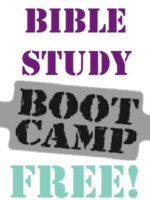
Your number one study tool is, of course, your Bible. However, how do you choose which version is best for you? As you well know, the Bible is the world’s most translated book. According to Wikipedia, as of November 2014, the Bible in its entirety has been translated into 531 languages and has been partially translated into 2,883 languages. It’s understandable how the process of choosing a version can be intimidating.
Do you want the KJV or the New KJV, the NIV or the NLV, the ASV or the CEV? They all have different translations, some more literal than others and read differently. Doing a little bit of research before you buy will help. Talk to friends and family about which versions they are reading most; ask what they like about their Bible. You will probably want to have one copy of whatever translation your ministry uses so that you can easily reference what is being taught during service. Your home study Bible should be whichever is most engaging to you. You want something that you will be inspired to read.
We will do a more in-depth breakdown of these different versions but for now here is a quick summary:
King James Version (KJV) – Considered the gold-standard for many. It is the oldest of the major versions of the Bible available today.
New American Standard Bible (NASB) – Has earned the reputation of being the most accurate English Bible translation, revealing what the original manuscripts actually say – not merely what the translator believes they mean.
New King James Version (NKJV) – Published in 1982, this version tries to make the original easier to understand while attempting to keep the word-for-word integrity intact.
New International Version (NIV) – One of the best-selling versions to date with a focus on clarity of the ideas behind the words.
New Living Translation (NLT) – This is translation reads more like a summary of scripture and can be helpful for understanding the ideas, but it is not a literal word-for-word translation.
English Standard Version (ESV) – The most recent major translation, the ESV keeps close to the literal translation of ancient texts but has better readability than many other versions.
Once you’ve narrowed your decision down to one or two choices, compare the less important factors such as, price, cover material (such as genuine leather, bonded leather, and so forth), and text size.
There is no one size fits all when it comes to Bible study. Do your research, go to the bookstore and sit down with a few versions of the Bible and read.
“The Lord looks down from heaven on all mankind to see if there are any who understand, any who seek God” Psalm 14:2 (NIV)









Comments are closed, but trackbacks and pingbacks are open.